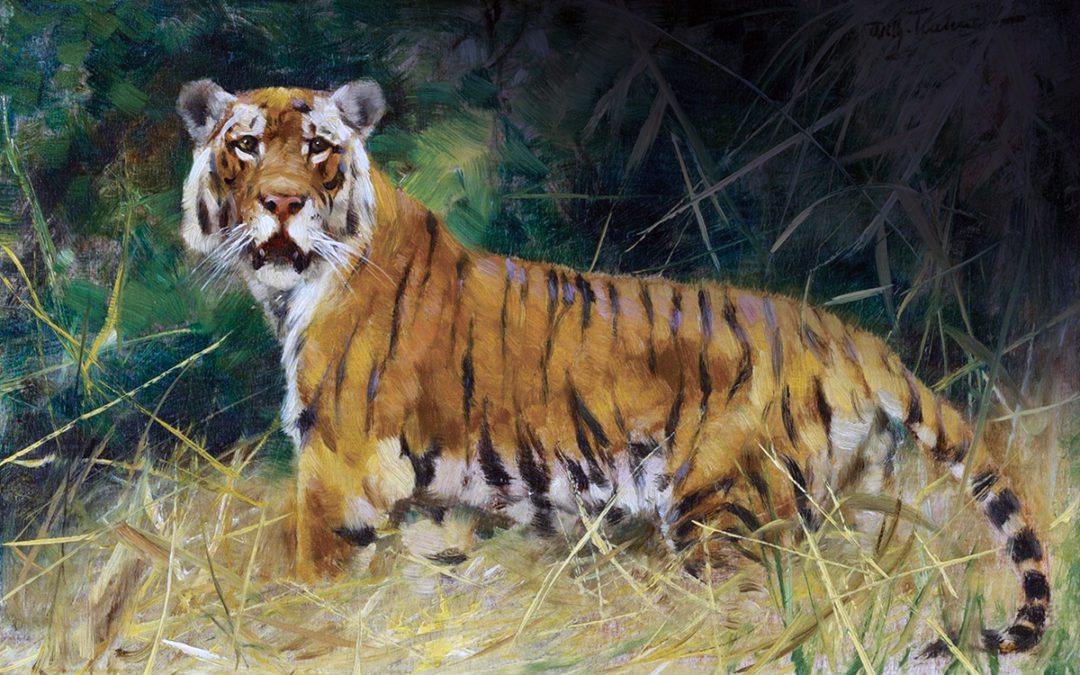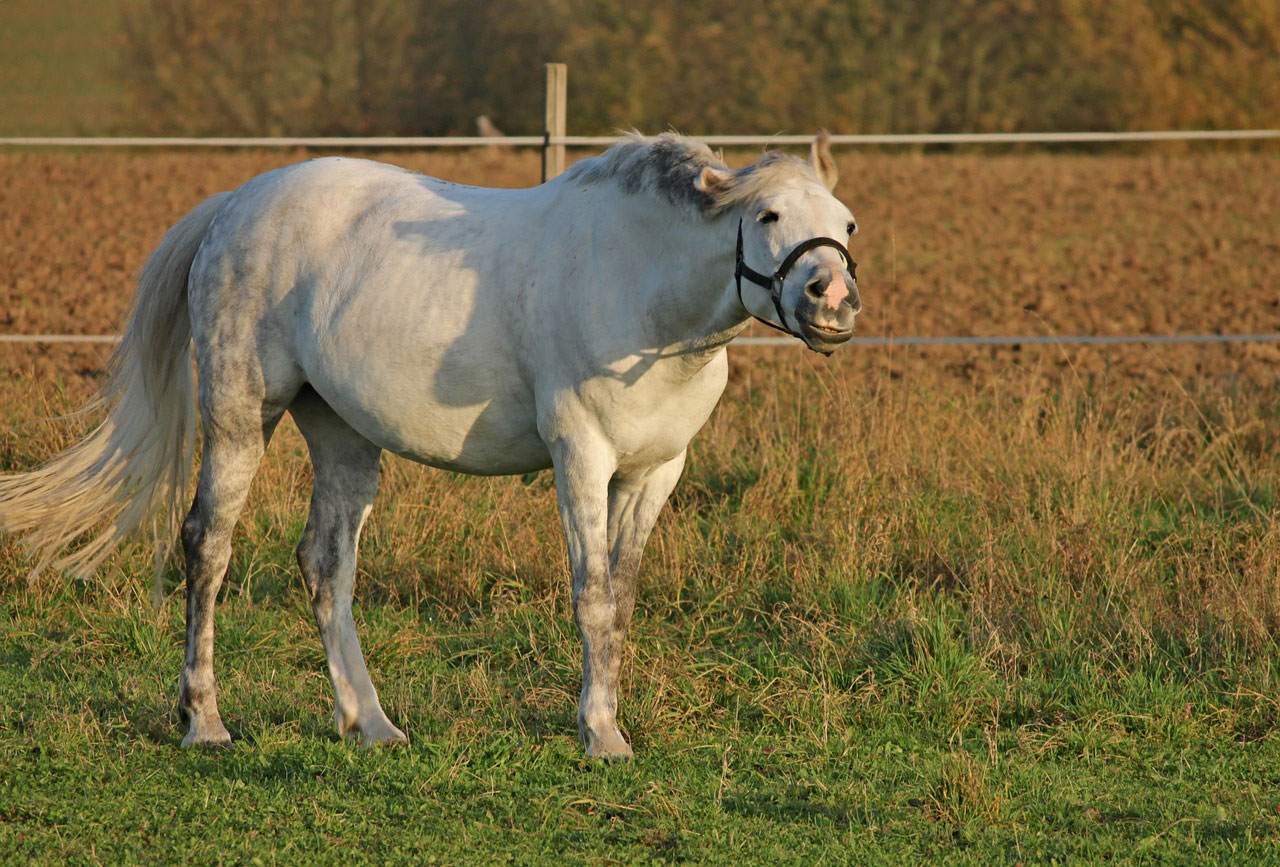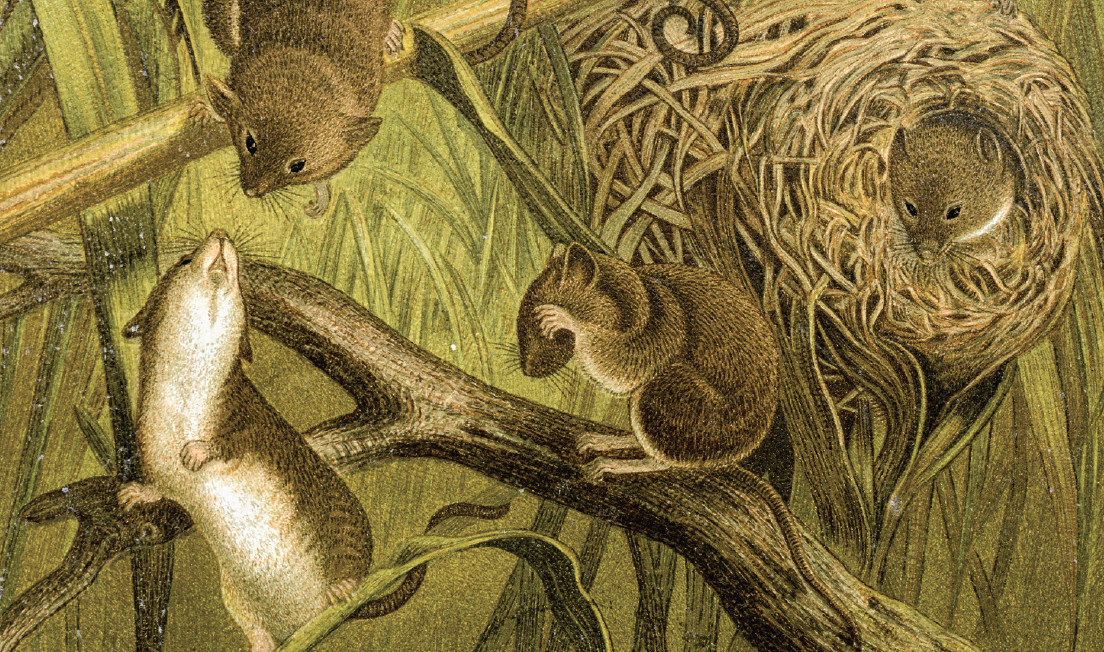One can suffer a bad case of mixed emotions when trying to call in a man-killing tiger.
However little faith we have in the superstitions we share with others—13 at a table, the passing of wine at dinner, walking under a ladder, and so on—our own private superstitions, though a source of amusement to our friends, are very real to us. I do not know if sportsmen are more superstitious than the rest of mankind, but I do know that they take their superstitions very seriously.
One of my friends invariably takes five cartridges, never more and never less, when he goes out after big game, and another as invariably takes seven cartridges. Another, who incidentally was the best-known big-game sportsman in northern India, never started the winter shooting season without first killing a mahseer.
My own private superstition concerns snakes. When after man-eaters, I have a deep-rooted conviction that, however much I may try, all my efforts will be unavailing until I have first killed a snake.
During the hottest days of one May, I had from dawn to dark climbed innumerable miles up and down incredibly steep hills, and through thick thornbush that had left my hands and knees a mass of ugly scratches, in search of a very wary man-eater. I returned on that 15th evening, dog tired, to the two-room forest bungalow I was staying at to find a deputation of villagers waiting for me with the very welcome news that the man-eater, a tiger, had been seen that day on the outskirts of their village. It was too late to do anything that night, so the deputation was provided with lanterns and sent home with strict injunctions that no one was to leave the village the following day.
The village was situated at the extreme end of the ridge on which the bungalow was, and because of its isolated position and the thick forest that surrounded it, it had suffered more from the depredations of the tiger than any other village in the district. The most recent victims were two women and a man.
I had made one complete circle of the village the following morning and had done the greater part of a second circle a quarter of a mile below the first when, after negotiating a difficult scree of shale, I came on a little nullah made by the rush of rainwater down the steep hillside. A glance up and down the nullah satisfied me that the tiger was not in it, and then a movement just in front of me, and about 25 feet away, caught my eye.
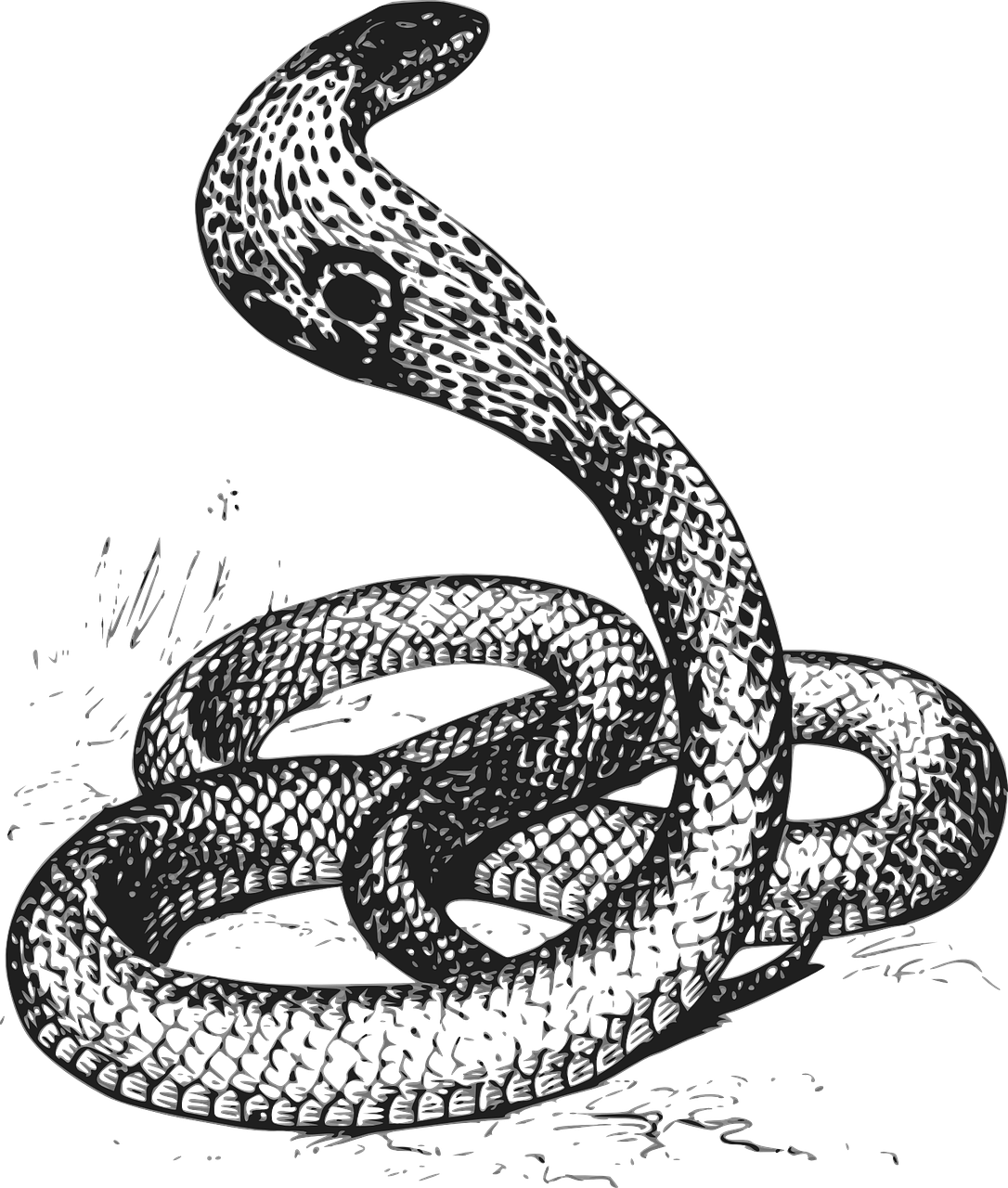
It was not until the head had been raised some two or three feet from the ground and the hood expanded that I realized it was a hamadryad.
At this spot there was a small pool the size of a bathtub, and on the far side of it was a snake that had evidently been drinking. The lifting of the snake’s head caught my eye, and it was not until the head had been raised some two or three feet from the ground and the hood expanded that I realized it was a hamadryad.
It was the most beautiful snake I had ever seen. The throat, as it faced me, was a deep orange-red shading to golden-yellow where the body met the ground. Its olive-green back was banded by ivory-colored chevrons, and some four feet of its length from the tip of its tail upwards was shiny black with white chevrons. In length the snake was between 13 and 14 feet.
One hears many tales about hamadryads, their aggressiveness when disturbed, and the speed at which they can travel. If, as it seemed about to do, the snake attacked, I should be at a disadvantage, but across the shale scree I felt that I could hold my own. A shot at the expanded hood, the size of a small plate, would have ended the tension, but the rifle in my hands was a heavy one, and I had no intention of disturbing the tiger that had showed up after so many days of weary waiting and toil.
After an interminably long minute, during which time the only movement was the flicking in and out of a long and quivering forked tongue, the snake closed his hood, lowered his head to the ground, and, turning, made off up the opposite slope.
Without taking my eyes off him, I groped with my hand on the hillside and picked up a stone that filled my hand as comfortably as a cricket ball. The snake had just reached a sharp ridge of hard clay when the stone, launched with the utmost energy I was capable of, struck it on the back of the head. The blow would have killed any other snake outright, but the only, and very alarming, effect it had on the hamadryad was to make it whip round and come straight toward me.
A second and larger stone fortunately caught it on the neck when it had covered half the distance between us, and after that the rest was easy. With a great feeling of satisfaction I completed the second circle round the village, and though it proved as fruitless as the first time, I was elated at having killed the snake. Now, for the first time in many days, I had a feeling that my search for the man-eater would be successful.
The following day I again searched the forest surrounding the village, and toward evening found the fresh pugmarks of the tiger at the edge of a plowed field overlooking the village. The occupants of the village, numbering about a hundred, were by now thoroughly alarmed, and leaving them with the assurance that I would return early the next day, I set out on my lonely four-mile walk back to the forest bungalow.
To walk with safety through forests or along deserted roads in an area in which a man-eater is operating calls for the utmost caution and the strict observance of many rules. It is only when the hunter has repeatedly been the hunted that the senses can be attuned to the required pitch and those rules be strictly adhered to, the breaking of which would provide the man-eater with an easy victim.
The reader may ask, “Why a lonely walk?” when I probably had men to spare in camp. My answer to this very natural question would be: first, because one is apt to get careless and rely too much on one’s companions, and second, because in a mix-up with a tiger, one has a better chance when alone.
The next morning, as I approached the village I saw an eager throng of men waiting for me, and when within earshot, I was greeted with the gratifying news that a buffalo had been killed in the village during the night. The animal had been dragged some distance along the ridge, then taken down into a narrow, deep and heavily wooded valley on the north face of the hill.
A careful reconnaissance from a projecting rock on the ridge satisfied me that an approach down the steep hill, along the line of the drag, would not be advisable, and that the only thing to do was to make a wide detour, enter the village from the lower end, and work up to the spot where I expected to find the kill.
This maneuver was successfully accomplished, and by midday I arrived at the spot—marked from above—where the valley flattened out for a hundred yards before going straight up 300 yards to the ridge above. It was at the upper end of this flat bit of ground that I expected to find the kill, and with luck, the tiger.
The long and difficult climb up the valley through dense thickets of thornbush and stunted bamboo had brought out a bath of sweat, and as it was not advisable to take on a job where quick firing might be necessary with sweaty hands, I sat down for a much-needed rest and smoke.
The ground in front of me was strewn with large, smooth boulders, among which a tiny stream meandered, forming wherever possible small, crystal-clear pools. Shod with the thinnest of rubber-soled shoes, the going over these boulders was ideal for my purpose, and when I had cooled and dried, I set off to stalk the kill in the hope of finding the tiger lying asleep near it.
When three-quarters of the ground had been covered, I caught sight of the kill tucked away under a bank of ferns about 25 yards from where the hill went steeply up to the ridge. The tiger was not in sight, and, very cautiously drawing level with the kill, I took up my position on a flat boulder to scan every inch of ground visible.
The premonition of impending danger is too well known and established a fact to need any comment. For three or four minutes, I had stood perfectly still with no thought of danger, and then, all at once, I became aware that the tiger was looking at me at a very short range. The same sense that had conveyed the feeling of impending danger to me had evidently operated in the same way on the tiger and awakened him from his sleep.
To my left front were some dense bushes growing on a bit of flat ground. On these bushes, distant 15 to 20 feet from me and about the same distance from the kill, my interest centered. Presently the bushes were gently stirred, and the next second I caught sight of the tiger going full speed up the steep hillside.
Before I could get the rifle to bear on him, he slipped behind a tree, and it was not until he had covered about 60 yards that I again saw him as he was springing up the face of a rock.
At my shot he fell backward and came roaring down the hill, bringing an avalanche of stones with him. A broken back, I concluded; and just as I was wondering how best to deal with him, he arrived all-of-a-heap at my feet. The next minute, as much to my relief as to my disappointment, he raced away full-out and apparently unwounded across the side of the hill. The momentary glimpses I caught of him offered no shot worth taking, and with a crash through some dry bamboo he disappeared round the shoulder of the hill into the next valley.
I found that my bullet, fired at an angle of 75 degrees, had hit the tiger on the left elbow and chipped out a section from that bone, which some cynical humorist has named the “funny bone.” Carrying on, the bullet had struck the rock and, splashing back, delivered a smashing blow on the point of the jaw.
Neither wound, however painful it may have been, was fatal, and the only result of my following up the very light blood trail into the next valley was to be growled at from a dense thorn thicket, which to enter would have been suicidal.
My shot had been heard in the village, and an expectant crowd was waiting for me on the ridge. They were even more disappointed, if that was possible, than I was at the failure of my carefully planned and executed stalk.
On visiting the kill the following morning, I was pleased and not a little surprised to find that the tiger had returned to it during the night and taken a light meal. The only way now of getting a second shot was to sit up over the kill, and here a difficulty presented itself. There were no suitable trees within convenient distance of the kill, and the very unpleasant experience I had had on a former occasion had effectively cured me of sitting at night on the ground for a man-eater.
While still undecided where to sit, I heard the tiger call some distance down the valley where I had climbed the previous day.
The calling of the tiger offered a very welcome chance of shooting it in the most pleasant way possible of bringing one of these animals to bag. The conditions under which a tiger can be called up are: (a) when rampaging through the forest in search of a mate, and (b) when lightly wounded.
It goes without saying that the sportsman must be able to call sufficiently well to deceive the tiger, and that the call must come from a spot to which the tiger will quite naturally come—a dense thicket, or a patch of heavy grass—and that the sportsman must be prepared to take his shot at a very close range.
I am quite certain that many sportsmen will be skeptical of the statement I have made that a lightly wounded tiger will come to a call. I would ask all such to reserve their judgment until they have tried the experiment for themselves. On this occasion, however, though the tiger answered me call for call for upwards of an hour, he refused to come any nearer, and I attributed my failure to the fact that I was calling from the spot where the previous day the tiger had met with an unfortunate experience.
The tree I finally selected was growing on the very edge of a perpendicular bank and had a convenient branch about eight feet from the ground. When sitting on this branch, I should be 30 feet directly above the boulder-strewn ravine up which I expected the tiger to come. The question of the tree settled, I returned to the ridge where I had instructed my men to meet me with breakfast.
By four o’clock in the evening I was comfortably seated on the branch and prepared for a long and hard sit-up. Before leaving my men, I had instructed them to come to me from the ridge at sunrise next morning. If I answered with the call of a leopard, they were to sit tight, but if they received no answer, they were to form two parties with as many villagers as they could collect and come down on either side of the valley, shouting and throwing stones.
I have acquired the habit of sleeping in any position on a tree, and as I was tired, the evening did not pass unpleasantly. As the setting sun was gilding the hilltops above me, I was roused to full consciousness by the alarm call of a langur. I soon located the monkey, sitting in a treetop on the far side of the valley, and as it was looking in my direction, I concluded it had mistaken me for a leopard. The alarm call was repeated at short intervals and finally ceased as darkness came on.
Hour after hour I strained my eyes and ears, and was suddenly startled by a stone rolling down the hillside and striking my tree. The stone was followed by the stealthy padding of a heavy, soft-footed animal, unmistakably the tiger.
At first I comforted myself with the thought that his coming in this direction, instead of up the valley, was accidental, but this thought was soon dispelled when he started to emit low, deep growls from immediately behind me. Quite evidently he had come into the valley while I was having breakfast and, taking up a position on the hill where the monkey had later seen him, had watched me climbing into the tree.
Here was a situation I had not counted on, and one that needed careful handling. The branch that had provided a comfortable seat while daylight lasted allowed little change of position in the dark. I could, of course, have fired my rifle into the air, but the terrible results I have seen following an attempt to drive away a tiger at very close quarters by discharging a gun dissuaded me from taking this action. Further, even if the tiger had not attacked, the discharge of the rifle (a .450/400) so near him would probably have made him leave the locality, and all my toil would have gone for nothing.
I knew the tiger would not spring, for that would have carried him straight down a drop of 30 feet onto the rocks below. But there was no need for him to spring, for by standing on his hind legs he could easily reach me.
Lifting the rifle off my lap and reversing it, I pushed the barrel between my left arm and side, depressing the muzzle and slipping up the safety-catch as I did so. This movement was greeted by a deeper growl than any that had preceded it.
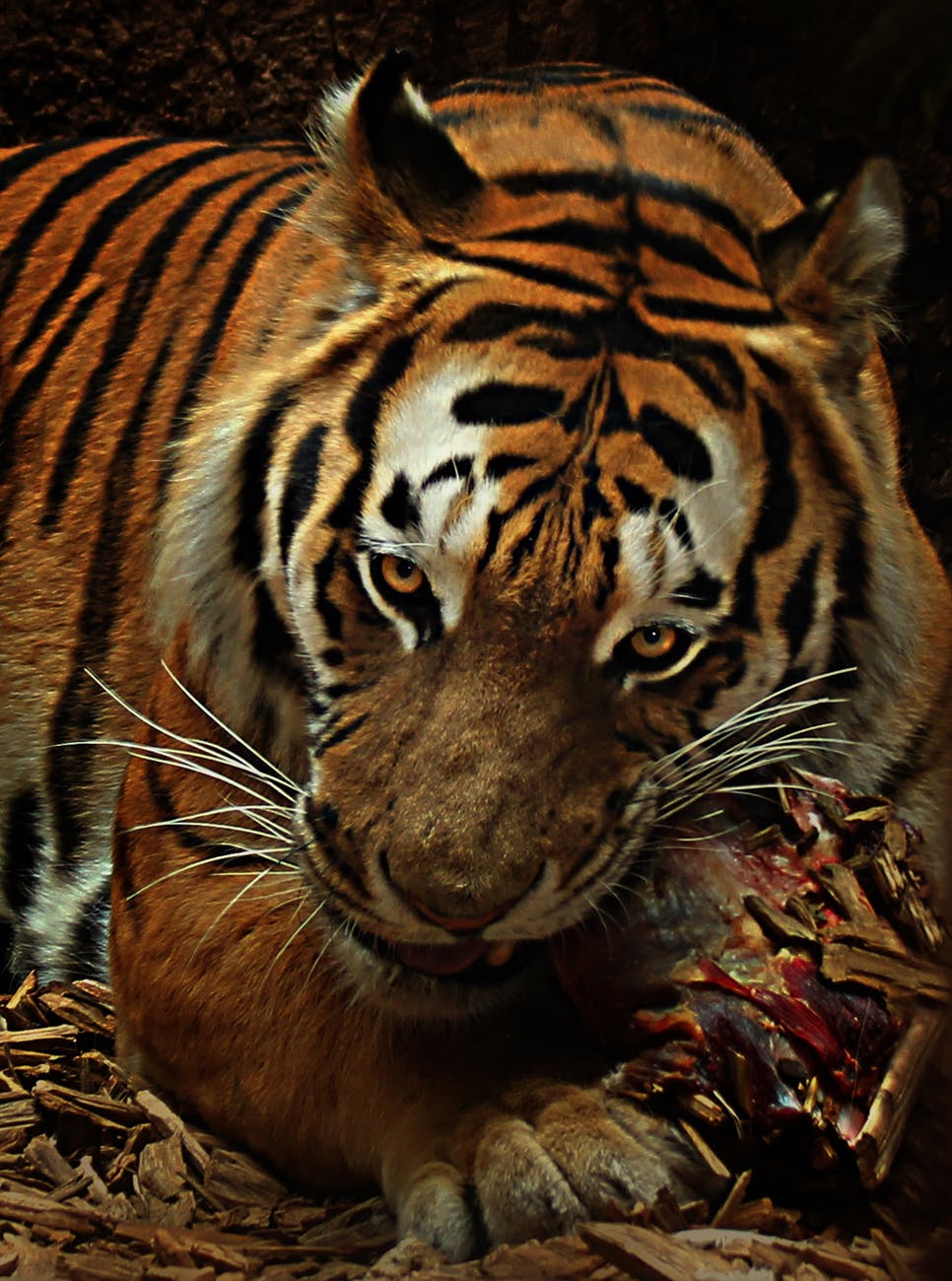
I heard the welcome sound of a bone being cracked at the kill.
If the tiger now reached up for me, he would in all probability come in contact with the rifle, round the triggers of which my fingers were crooked, and even if I failed to kill him, the confusion following my shot would give me a sporting chance of climbing higher into the tree.
Time dragged by on leaden feet, and, eventually tiring of prowling about the hillside and growling, the tiger sprang across the little ravine on my left, and a few minutes later I heard the welcome sound of a bone being cracked at the kill. At last I was able to relax in my uncomfortable position, and the only sounds I heard for the rest of the night came from the direction of the kill.
The sun had been up but a few minutes and the valley was still in deep shadow when my men cooed from the ridge, and almost immediately afterwards I caught sight of the tiger making off at a fast canter, up and across the hill on my left. In the uncertain light and with my nightlong-strained eyes, the shot was a very difficult one, but I took it and had the satisfaction of seeing the bullet go home.
Turning and with a great roar he came straight for my tree, and, as he was in the act of springing, the second bullet, with great good fortune, crashed into his chest. Diverted in his spring by the impact of the heavy bullet, the tiger struck the tree just short of me and, ricocheting off, went headlong into the valley below, where his fall was broken by one of the small pools below me. He floundered out of the water, leaving it dyed red with his blood, and went lumbering down the valley and out of sight.
Fifteen hours on the hard branch had cramped every muscle in my body, and it was not until I had swarmed down the tree, staining my clothes in the great gouts of blood the tiger had left on it, and massaged my stiff limbs that I was able to follow him. He had gone but a short distance, and I found him lying dead at the foot of a rock in another pool of water.
Contrary to my orders, the men collected on the ridge, hearing my shot and the tiger’s roar followed by my second shot, came in a body down the hill. Arriving at the blood-stained tree, at the foot of which my soft hat was lying, they not unnaturally concluded I had been carried off by the tiger.
Hearing their shouts of alarm, I called out to them, and again they came running down the valley, only to be brought up with a gasp of dismay when they saw my bloody clothes. Reassured that I was not injured and that the blood was not mine, a moment later they were crowding round the tiger. A stout sapling was soon cut and lashed to it by creepers, and the tiger, with no little difficulty and a great deal of shouting, was carried up the steep hill to the village.
Editor’s Note: This story is from Corbett’s Man-Eaters of Kumaon, published in 1946 by Oxford University Press.
 Sporting Classics has compiled this remarkable anthology showcasing the best African adventures published in our award-winning magazine.
Sporting Classics has compiled this remarkable anthology showcasing the best African adventures published in our award-winning magazine.
Ruark, Capstick, Roosevelt, Markham – the legends in outdoor literature are all here, sharing their stories of deadly encounters with dangerous game, of bizarre run-ins with witch doctors, gorillas and man-eaters, of safaris into the uncharted wilds of deepest Africa.
Illustrated by world-renowned artist Bob Kuhn, AFRICA features more than 400 pages of unforgettable stories by some of the finest professional hunters and writers of sporting adventure. Buy Now

